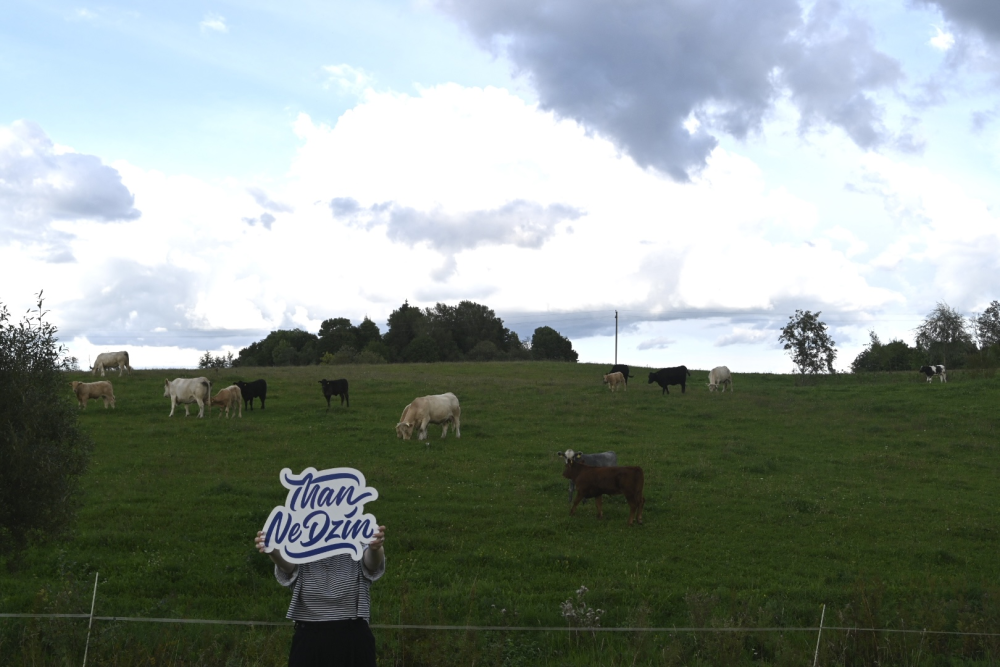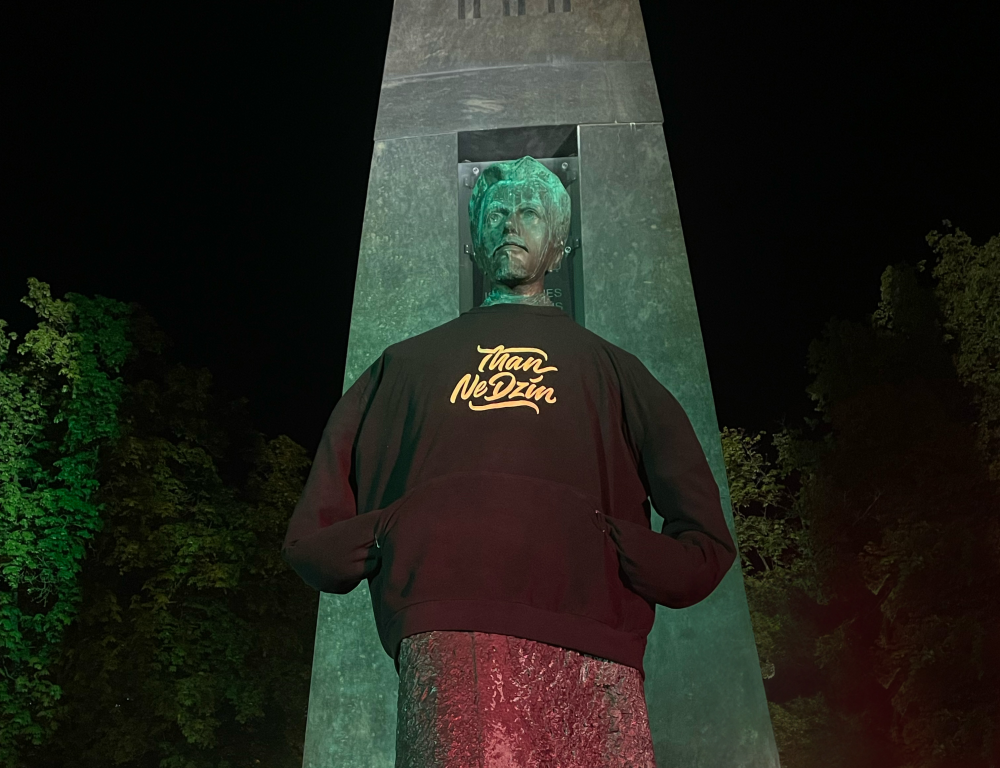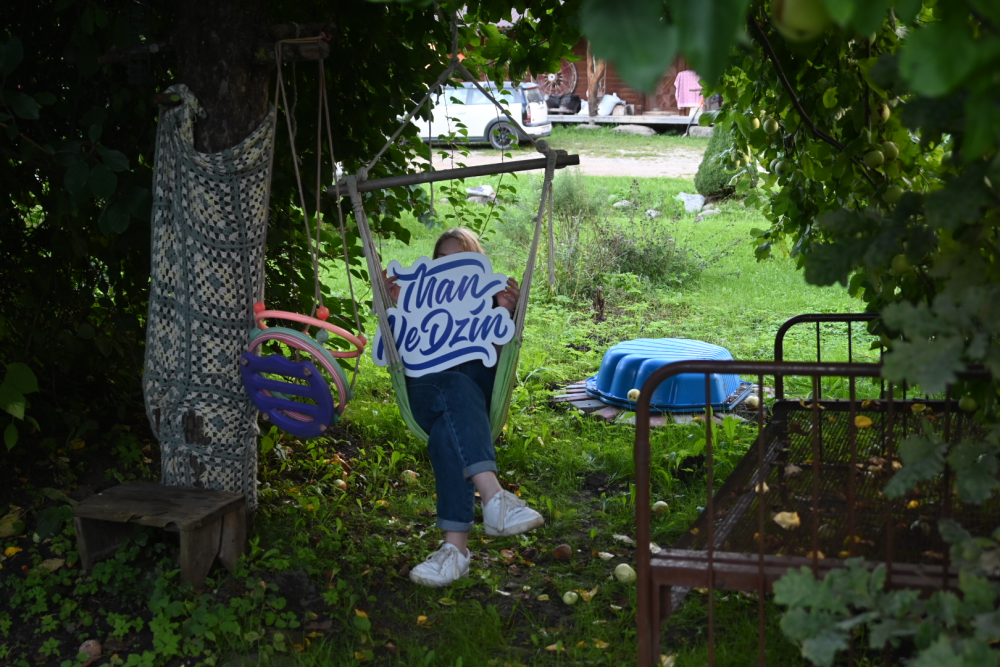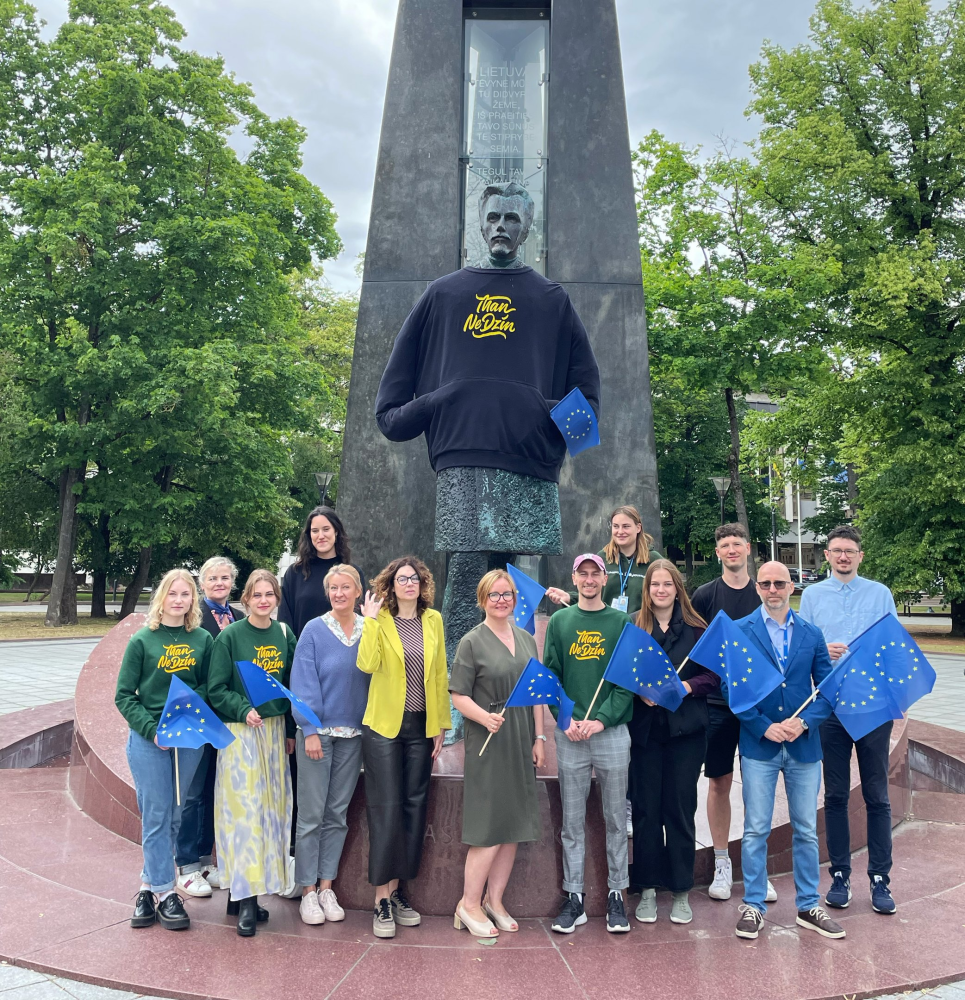Combining digital tools, public outreach, and creative communication strategies, the campaign became a beacon of youth empowerment and civic responsibility. This case study dives into the planning, execution, challenges, and achievements of the "Man ne dzin" campaign, shedding light on its profound impact and the lessons it offers for similar initiatives worldwide.
Reaching Youth Through Innovation
At the heart of the "Man ne dzin" (“I do care”) campaign was a commitment to accessibility, engagement, and relevance. Recognizing that a significant barrier to youth political participation is the lack of clear and trustworthy information, LiJOT developed a dedicated website. This platform served as a comprehensive hub for election-related content, offering easy-to-understand information about candidates, political parties, and the overall voting process. The user-friendly design ensured that even first-time voters could navigate the site effortlessly and find the information they needed to make informed decisions.
To maximize its reach, the campaign embraced the digital habits of its target audience—young people. Social media platforms played a pivotal role in spreading the campaign’s message, engaging over 158,000 users with posts, videos, and interactive content. Public transport screens in major cities like Vilnius, Kaunas, Klaipėda, Panevėžys, Šiauliai, and Marijampolė further amplified the campaign’s visibility. These advertisements targeted urban populations, ensuring that the campaign’s message reached young commuters in their daily routines. A striking installation at Vincas Kudirka Square in Vilnius added a tangible, physical dimension to the campaign, sparking conversations and drawing attention to the importance of voting.
 Photo: LiJOT
Photo: LiJOT
The numbers speak volumes about the campaign’s success. Over 3,000 individuals directly accessed the website, while the broader campaign indirectly reached thousands more. This multichannel approach ensured that the "Man ne dzin" campaign not only informed young voters but also inspired them to take action. The result was a significant boost in youth voter turnout, which reached an impressive 49.05%, demonstrating the power of targeted, creative engagement.
Overcoming Challenges to Make a Difference
No campaign of this scale is without its challenges, and "Man ne dzin" was no exception. One of the primary obstacles faced by LiJOT was ensuring the digital security of its website and online tools. In an era of increasing cyber threats, protecting user data and maintaining a secure online presence is paramount. While the transition to the Hostinger platform enhanced the website’s security, budget constraints prevented the campaign from adopting more comprehensive digital protection measures, such as those offered by services like NordVPN. This limitation highlighted the importance of allocating resources for cybersecurity in future initiatives.
Another significant challenge was the implementation of planned public installations in various municipalities. Although the campaign successfully set up an installation at Vincas Kudirka Square, efforts to expand this aspect of the campaign were hindered by a lack of agreement from other municipalities. This setback underscored the need for improved communication and collaboration with local authorities, as well as the importance of building strong partnerships to ensure the successful execution of campaign objectives.
Despite these challenges, the "Man ne dzin" campaign achieved remarkable results. Its ability to adapt and overcome obstacles demonstrated the resilience and determination of LiJOT and its partners. The campaign’s success lies not only in its measurable outcomes but also in its ability to inspire a sense of civic responsibility among young Lithuanians.
 Photo: LiJOT
Photo: LiJOT
Building a Blueprint for Civic Engagement
The "Man ne dzin" campaign offers valuable insights and lessons for organizations aiming to promote active citizenship among youth. At its core, the campaign’s success can be attributed to its strategic use of technology and communication channels. The website www.mannedzin.lt was the campaign’s centerpiece, providing a centralized platform for information and engagement. By prioritizing user-friendliness and accessibility, LiJOT ensured that young voters could easily access accurate, relevant information about the elections.
Social media played a crucial role in amplifying the campaign’s reach and engaging its target audience. Platforms like Facebook and Instagram allowed the campaign to connect with young people where they already spend a significant amount of their time. Interactive posts, videos, and live Q&A sessions fostered a sense of community and encouraged dialogue around the importance of voting. The use of public transport screens and installations added an additional layer of visibility, ensuring that the campaign’s message reached a diverse audience.
The Impact of "Man ne dzin" (“I do care”)
The impact of the "Man ne dzin" campaign was both immediate and far-reaching. By directly engaging over 3,000 users and reaching over 158,000 individuals through social media and public advertising, the campaign successfully countered the narrative of youth apathy towards politics. The 49.05% youth voter turnout was a testament to the campaign’s effectiveness in inspiring young people to participate in the democratic process.
Beyond the numbers, the campaign’s impact was evident in the personal stories of young voters. One participant shared, “For the first time, I felt informed and motivated to vote. The 'Man ne dzin' campaign made it simple to understand the candidates and the issues at stake.” Such testimonials highlight the transformative power of the campaign in fostering a sense of empowerment and responsibility among young Lithuanians.
The campaign also contributed to a broader cultural shift in how young people perceive their role in democracy. By providing clear, trustworthy information and creating spaces for dialogue, "Man ne dzin" encouraged young voters to see themselves as active participants in shaping their country’s future. This shift in mindset is a crucial step towards building a more engaged and informed electorate.
 Photo: LiJOT
Photo: LiJOT
Looking Ahead: Lessons for the Future
The "Man ne dzin" campaign serves as a blueprint for similar initiatives seeking to promote civic engagement among youth. Its success underscores the importance of understanding the target audience and meeting them where they are. By leveraging digital tools, creative communication strategies, and a clear message of empowerment, the campaign demonstrated how to effectively engage young voters and inspire them to take action.
Future campaigns can build on the lessons learned from "Man ne dzin." Allocating resources for digital security, fostering collaboration with local authorities, and continuously adapting to new challenges are essential for ensuring the success and sustainability of similar initiatives. Additionally, maintaining a focus on accessibility and user-friendliness is crucial for reaching diverse audiences and breaking down barriers to participation.
The "Man ne dzin" campaign’s achievements highlight the potential of youth-led initiatives to drive meaningful change. By empowering young people to take an active role in democracy, LiJOT has set a powerful example for organizations worldwide. The campaign’s legacy will undoubtedly inspire future efforts to promote active citizenship and build a more inclusive, participatory democracy.
 Photo: LiJOT
Photo: LiJOT
In the words of one young participant, "The 'Man ne dzin' campaign showed me that my voice matters. Voting is not just a right; it’s a responsibility to myself and my community.” Such sentiments encapsulate the true impact of the campaign—empowering a generation to care, to vote, and to shape the future.
Watch Umberto Masi (the President of LiJOT) talking about the Accelerator, the initiative and it's impact!
Author: Umberto Masi (President of LiJOT)
Photos: Lithuanian Council of Youth Organizations (LiJOT)
Lithuanian Council of Youth Organizations (LiJOT) – is the largest non-governmental youth organization in Lithuania, uniting national youth organizations and municipal youth organization councils.
